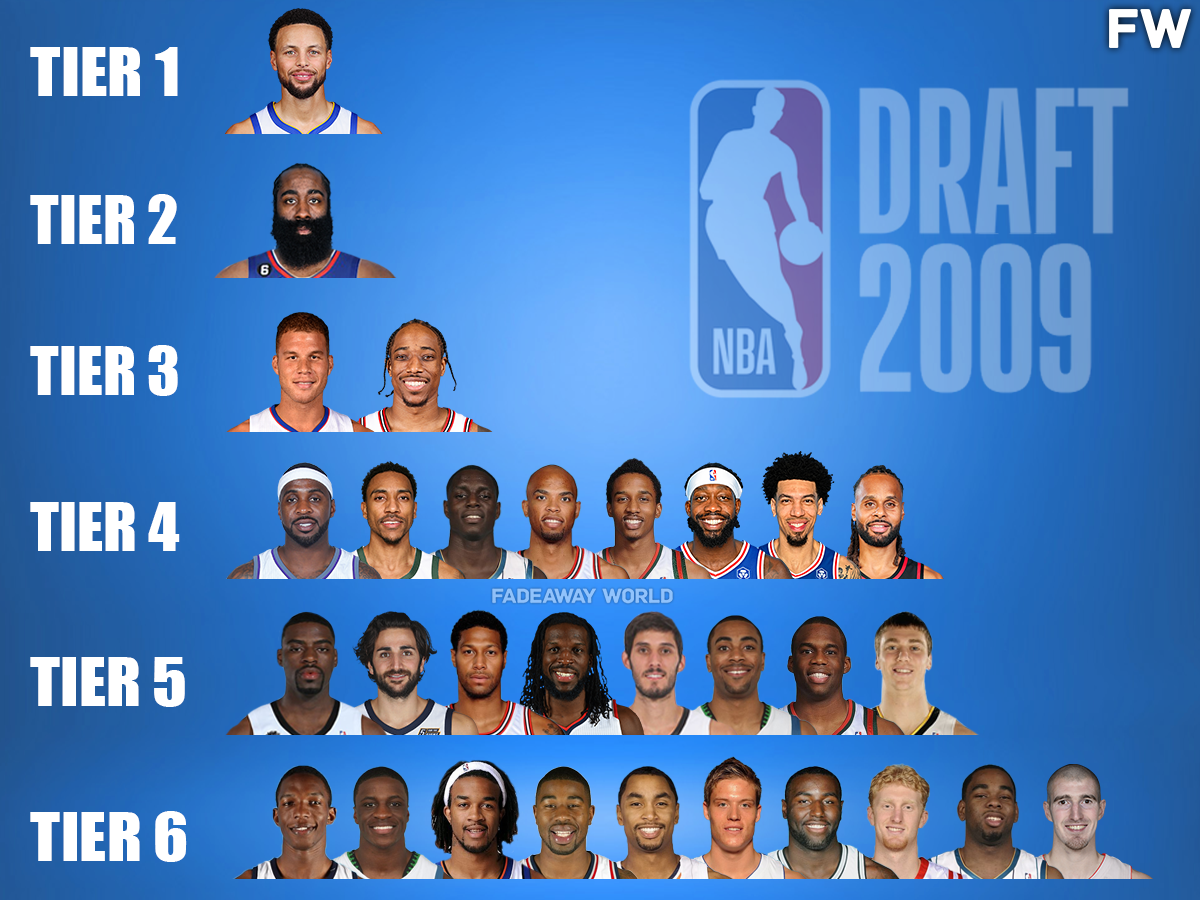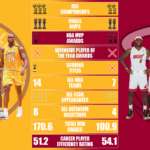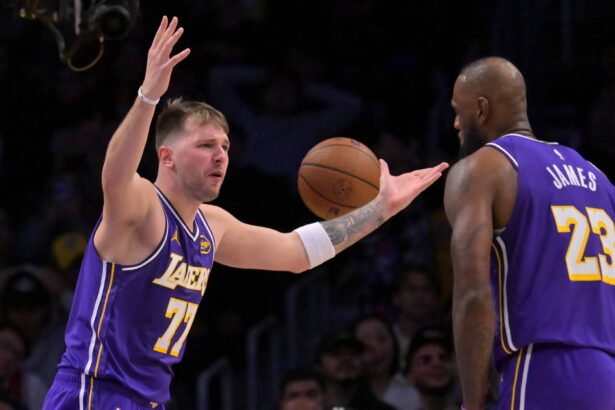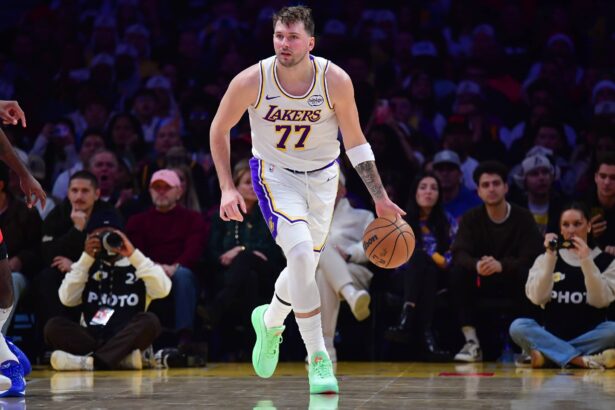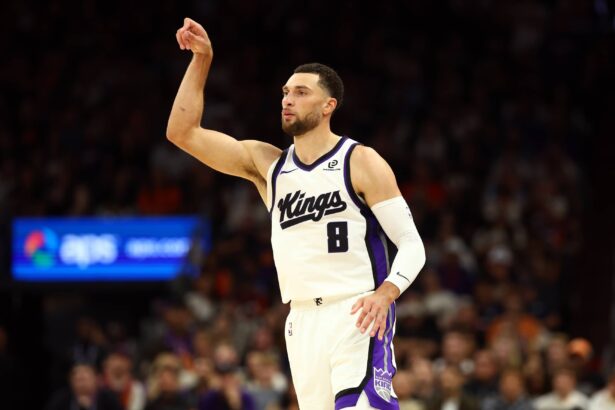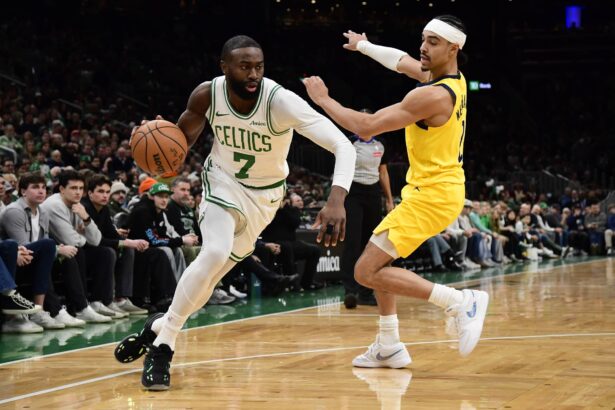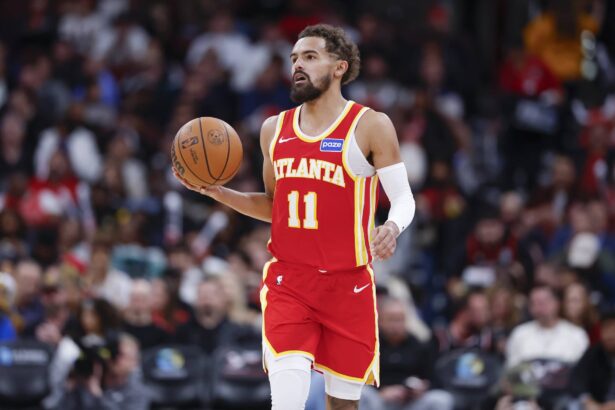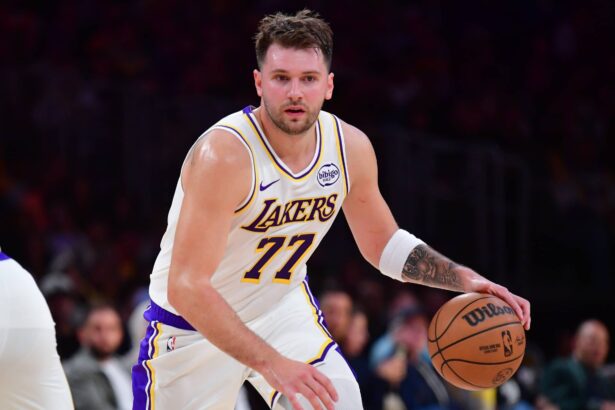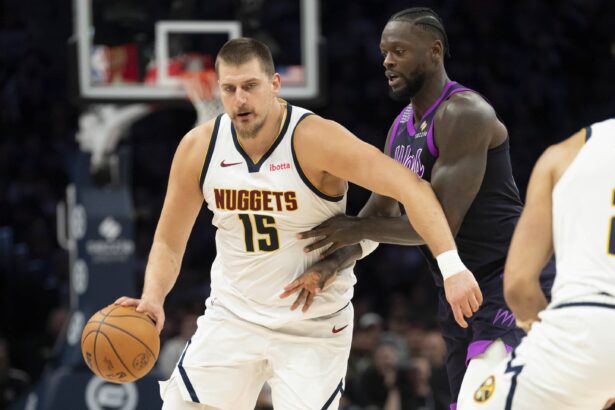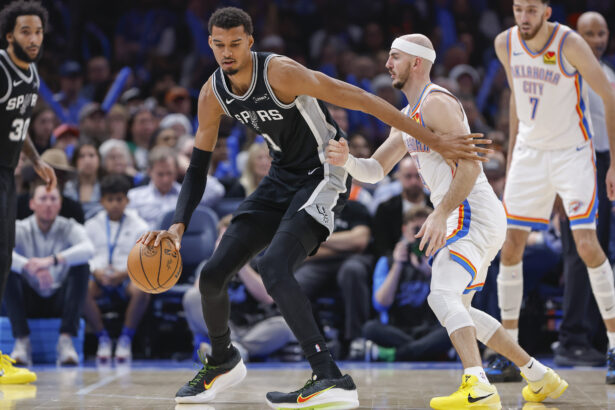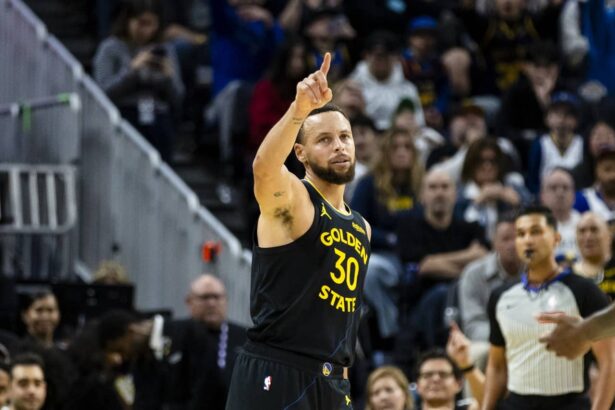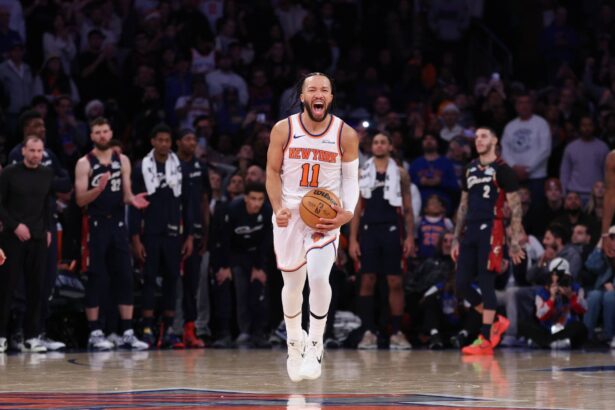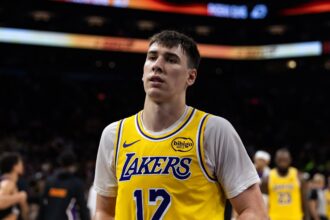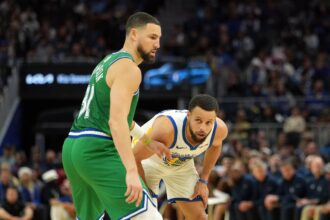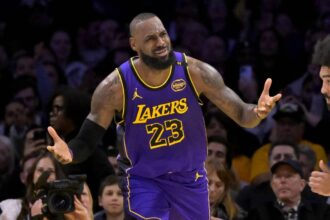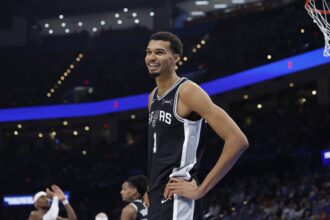In the ever-evolving landscape of the NBA, each draft class serves as a canvas upon which the league’s future unfolds. The class of 2009, much like its successors, bore witness to the emergence of talents who would go on to leave an indelible mark in the NBA. From the highest aspirations of first-round selections to the unyielding spirit of those chosen later, this retrospective journey invites us to reflect on the diverse trajectories and lasting impacts that define the NBA’s 2009 draft class.
Tier 6
Hasheem Thabeet, Jonny Flynn, Jordan Hill, Terrence Williams, Gerald Henderson, Jonas Jerebko, DaJuan Blair, Chase Budinger, Marcus Thornton, Nando de Colo
Hasheem Thabeet entered the NBA with towering expectations, being selected as the second overall pick in the 2009 draft. Standing at 7 feet 3 inches, his physical presence suggested the potential for defensive dominance and rim protection. However, Thabeet faced the harsh reality of the professional league, struggling to find a niche that capitalized on his imposing stature. His journey involved multiple stints with different teams, each stint revealing glimpses of potential but falling short of the expected impact. The challenges in adapting to the speed and demands of the NBA game proved formidable, preventing Thabeet from establishing himself as the defensive force many envisioned.
Jonny Flynn faced a tumultuous path in the NBA, marked by both promise and adversity. Selected just outside the top five at pick number six, Flynn was expected to bring stability to the point guard position. Unfortunately, persistent injuries hampered his ability to showcase his full potential. Inconsistent performances, coupled with the challenges of recovering from injuries, hindered Flynn’s progress. Despite his initial bursts of brilliance, Flynn found it challenging to secure a permanent starting role, preventing him from fulfilling the expectations associated with a top-ten pick.
Jordan Hill entered the league with a repertoire of skills that hinted at his potential to be a formidable frontcourt presence. Drafted eighth overall, Hill showcased glimpses of promise but struggled to convert those moments into a sustained and impactful career. His versatility and ability to contribute on both ends of the floor made him a valuable asset for various teams, but consistency remained elusive. Despite earning rotation minutes and demonstrating flashes of excellence, Hill’s trajectory fell short of the lofty expectations tied to his lottery selection.
Terrence Williams burst onto the NBA scene with flashes of versatility, displaying the ability to impact the game in multiple facets. Drafted with the eleventh pick, Williams showcased athleticism, playmaking, and scoring ability. However, challenges in adapting to different team environments and finding a stable role hindered his long-term success. Williams faced the difficulty of navigating through various teams without securing a definitive place in the league, preventing him from evolving into the dynamic player many envisioned.
Gerald Henderson provided steady contributions during his NBA tenure, demonstrating a balanced skill set that included scoring and defensive prowess. Selected with the twelfth pick, Henderson showcased his ability to be a reliable two-way player. However, the expectations associated with a lottery pick weighed heavily on his career. While he carved out a respectable role, Henderson fell short of transforming into a foundational player for any franchise. His scoring and defensive abilities were commendable, yet they were insufficient to propel him into the upper echelons of NBA stardom.
Jonas Jerebko, DaJuan Blair, Chase Budinger, Marcus Thornton, and Nando de Colo each had moments of promise, contributing in various capacities for the teams they played for. However, the challenge for these players lies in maintaining consistent impact and securing a stable role within the league. Whether due to injury concerns, adaptation issues, or the competitive nature of the NBA, these players struggled to establish themselves as cornerstone figures for their respective teams. Despite showcasing skills and flashes of brilliance, the hurdles of sustaining success in a highly competitive league prevented them from ascending to higher tiers of recognition.
Tier 5
Tyreke Evans, Ricky Rubio, James Johnson, DeMarre Carroll, Omri Casspi, Wayne Ellington, Jodie Meeks, Tyler Hansbrough
Tyreke Evans spectacularly burst onto the NBA scene, earning Rookie of the Year honors in 2010. Drafted with the fourth overall pick, Evans showcased a unique blend of size, speed, and scoring ability. However, the challenge for Evans lay in maintaining the same level of impact as he navigated through different teams. His early success and versatility, particularly as a rookie point guard, sparked high expectations. However, adapting to various team structures and finding a consistent role proved challenging, preventing him from evolving into a perennial All-Star.
Ricky Rubio entered the league with immense anticipation as a flashy, pass-first point guard. Selected with the fifth pick, Rubio’s court vision and passing ability were evident from the outset. However, his offensive limitations, especially in scoring consistency, became a recurring theme throughout his career. Rubio’s impact was undeniable in orchestrating offenses, but the evolution into a complete point guard faced obstacles. Despite providing memorable moments and contributing to team play, Rubio’s journey involved adapting to different franchises, each with unique expectations for his role.
James Johnson carved a niche for himself as a versatile forward capable of impacting both ends of the floor. Drafted sixteenth overall, Johnson’s journey in the NBA involved developing his skills and finding a balance between offensive and defensive contributions. Known for his athleticism and defensive prowess, Johnson’s offensive game underwent refinement over the years. While he showcased flashes of two-way potential, consistency remained a focal point. His ability to guard multiple positions and provide occasional scoring made him a valuable asset, but reaching the next level of impact eluded him.
DeMarre Carroll emerged as a reliable 3-and-D player, contributing to the success of multiple teams. Drafted in the first round with the twenty-seventh pick, Carroll’s journey involved adapting his game to fit the needs of different franchises. His defensive tenacity and perimeter shooting made him a sought-after asset for playoff-contending teams. While Carroll lacked headline-grabbing statistics, his role as a defensive stopper and reliable scorer in the right system contributed to his sustained presence in the league.
Omri Casspi, Wayne Ellington, Jodie Meeks, and Tyler Hansbrough each found roles as valuable role players, contributing to specific aspects of the game. Casspi, the first Israeli-born player in the NBA, showcased scoring versatility and an ability to stretch the floor. Ellington earned recognition for his three-point shooting, providing floor spacing for his teams. Meeks displayed a scoring touch, particularly from beyond the arc, and Hansbrough carved a niche as a gritty, physical presence in the paint. While each player had their moments, the challenge lay in maintaining consistent impact and securing a lasting role in the league. The dynamics of team rosters, coaching changes, and adapting to evolving playing styles posed hurdles that influenced their trajectories in the NBA.
Tier 4
Ty Lawson, Jeff Teague, Darren Collison, Taj Gibson, Brandon Jennings, Patrick Beverley, Danny Green, Patty Mills
Ty Lawson swiftly made his mark as an electric point guard known for his speed and playmaking ability. Drafted 18th overall, Lawson’s impact was immediate, particularly in orchestrating offenses and pushing the pace. Over his 9-season career, he played for several teams, averaging 12.7 points, 2.7 rebounds, and 6.0 assists per game. Despite on-court success, off-court challenges and legal issues disrupted Lawson’s trajectory, impacting his consistency and preventing him from reaching the upper echelons of point guard stardom.
Jeff Teague, drafted 19th overall, solidified his status as a reliable point guard over the course of his career. Known for his quickness, Teague’s ability to break down defenses and create scoring opportunities marked his playing style. Over 12 seasons, he averaged 12.6 points, 2.4 rebounds, and 5.8 assists per game. While not always in the spotlight, Teague’s impact extended beyond statistics, as he became a key facilitator for his teams. The challenge lay in maintaining an All-Star level of performance throughout his career, something he did with the Atlanta Hawks in 2015.
Darren Collison, selected with the 21st pick, showcased steady and efficient play as a point guard. Over his 12-season career, he played for multiple teams, averaging 12.5 points, 2.7 rebounds, and 5.0 assists per game. Collison’s ability to run an offense and contribute as a scorer made him a valuable asset. Despite not receiving the same level of recognition as some of his draft peers, Collison’s impact was felt in his consistency and reliability mainly with the Indiana Pacers.
Taj Gibson established himself as a rugged and dependable power forward after being drafted 26th overall. Known for his defensive prowess, shot-blocking, and tenacity on the boards, Gibson became a linchpin in the Chicago Bulls’ frontcourt. Over 13 seasons, he averaged 9.4 points, 6.3 rebounds, and 1.3 blocks per game. His blue-collar work ethic and willingness to embrace the dirty work made him a fan favorite. The challenge for Gibson was carving out a distinct identity in an era where traditional power forwards faced challenges adapting to a changing playing style.
Brandon Jennings burst onto the scene with a 55-point game during his rookie season, setting high expectations for the 10th overall pick. Over 9 seasons, he played for various teams, averaging 14.1 points, 2.5 rebounds, and 5.7 assists per game. Known for his scoring ability and flashy playing style, Jennings showcased glimpses of brilliance. However, inconsistency and adapting to team dynamics posed challenges throughout his career. Jennings faced the dual pressure of living up to early hype and navigating through different teams, hindering the sustained success that many envisioned for the dynamic point guard.
Patrick Beverley, selected with the 42nd pick, forged his identity as one of the league’s premier perimeter defenders. Over his 14-season career, he played for several teams, averaging 8.4 points, 4.0 rebounds, and 3.4 assists per game. With a relentless and tenacious defensive approach, Beverley’s ability to disrupt opposing offenses and hound ball-handlers became a hallmark of his game. While not a primary scoring option, his gritty style of play, coupled with timely three-point shooting, made him a crucial asset on both ends of the floor. Beverley’s impact extended beyond traditional statistics, as he provided the intangibles that contribute to a team’s success.
Danny Green, selected 46th overall, became renowned for his sharpshooting and defensive prowess. Over his 14-season career, he played for multiple teams, averaging 8.9 points, 3.5 rebounds, and 1.5 assists per game. Green’s ability to space the floor and provide lockdown defense made him a valuable 3-and-D player. His impact was particularly evident in playoff settings, where his clutch shooting and defensive contributions played pivotal roles in multiple championship runs.
Patty Mills, a second-round gem selected with the 55th pick, evolved into one of the league’s premier backup point guards. Over his 13-season career, he played predominantly for the San Antonio Spurs, averaging 9.2 points, 1.6 rebounds, and 2.4 assists per game. Mills’ quickness, scoring ability, and leadership off the bench made him a valuable asset. His impact extended beyond traditional statistics, as he often provided the spark and energy that shifted the momentum in favor of his team, especially in critical moments.
Tier 3
Blake Griffin, DeMar DeRozan
Blake Griffin entered the league as a high-flying power forward with a skill set that transcended traditional positions. Drafted first overall, Griffin lived up to the hype by delivering highlight-reel dunks and showcasing an evolving offensive game. Over his 12-season career, he played for the Los Angeles Clippers, Detroit Pistons, Boston Celtics, and Brooklyn Nets, averaging 21.4 points, 8.7 rebounds, and 4.4 assists per game. Despite early injury setbacks, Griffin adapted his playing style, incorporating a reliable three-point shot and playmaking abilities. While injuries affected his athleticism, his basketball IQ and versatility remained crucial aspects of his contributions on the court.
DeMar DeRozan established himself as one of the league’s premier shooting guards, known for his scoring prowess and mid-range game. Drafted ninth overall, DeRozan spent the majority of his career with the Toronto Raptors before moving to the San Antonio Spurs. Over 13 seasons, he averaged 20.4 points, 4.4 rebounds, and 3.6 assists per game. DeRozan’s ability to navigate defenses and consistently contribute as a primary scorer showcased his offensive prowess. Despite playing in an era increasingly focused on three-point shooting, DeRozan maintained his effectiveness with his unique style, earning multiple All-Star selections and reviving his career in Chicago after he signed a 3-year-deal in 2021 with the Bulls.
Tier 2
James Harden
James Harden evolved into one of the NBA’s premier offensive forces, rewriting the league’s scoring narrative during his 15-season career. Selected third overall, Harden began his journey with the Oklahoma City Thunder before blossoming into a perennial All-Star with the Houston Rockets and later the Brooklyn Nets. Averaging a staggering 25.2 points, 5.3 rebounds, and 6.3 assists per game, Harden’s skill set was characterized by an unrivaled ability to score in various ways. His signature step-back three-pointer became a weapon of choice, and his knack for drawing fouls added a layer of complexity to his game.
Despite occasional criticisms of his playing style, Harden’s impact extended beyond individual accolades, contributing to numerous playoff runs and solidifying his status as one of the league’s generational talents. After a short stint with the Philadelphia 76ers, Harden is now the latest star for the Los Angeles Clippers, where he may have his last shot at an NBA title.
Tier 1
Stephen Curry
Stephen Curry, drafted seventh overall, stands as a transformative figure who revolutionized the game of basketball. Over his illustrious 15-season career, Curry became synonymous with the Golden State Warriors dynasty, guiding them to four championships. Averaging 24.2 points, 4.5 rebounds, and 6.5 assists per game, Curry’s offensive brilliance was highlighted by his unprecedented shooting range and ball-handling wizardry.
His three-point shooting not only shattered records but also reshaped the league’s approach to offense, emphasizing the long-range shot as a potent weapon. Beyond the statistics, Curry’s leadership, basketball IQ, and impact on team culture elevated him to iconic status. With two MVP awards, four NBA championships, a Conference Finals and NBA Finals MVP, and a legacy that transcends his on-court achievements, Curry rightfully resides in Tier 1, embodying the pinnacle of NBA greatness.

